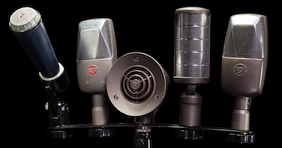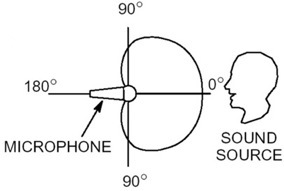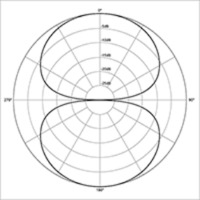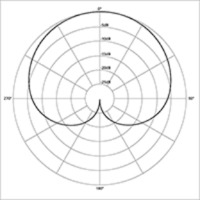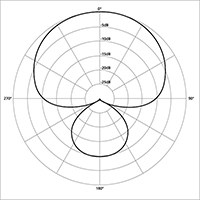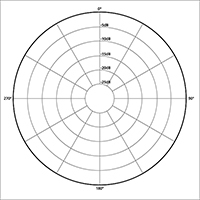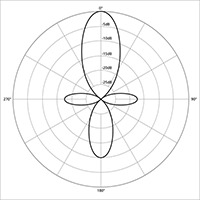Microphone Types & Directionality
The Steele Vintage Microphone Collection contains numerous kinds of microphones. The major microphone types are Carbon, Condenser, Dynamic, Ribbon, Crystal, and Dual Element. The following pages of the pages further explain these six main types, and some are organized by microphone directionality as well. This page will clarify microphone directionality.
Microphone Directionality
Microphone directionality refers to which direction a microphone gets its sound from. Some microphones can only pick up sound from one direction; others can pick up sound from all around it. Directionality is also referred to as "polar response," "polar pattern," or "frequency response."
While there are numerous types of directionality in microphones, Mr. Steele's vintage microphone collection contains five types; Bi-Directional, Cardioid, Super Cardioid, Omni-Directional, and Hyper-Cardioid. Of these, the most common types in his collection are the Bi-Directional and Cardioid response types.
Figure T1 will help you understand what each of the diagrams below represent. Each pattern below is oriented as if the microphone were pointing directly up.
Bi-Directional
The typical pick-up pattern of a Bi-Directional microphone is demonstrated by Figure T2. Bi-Directional microphones pick up sound from only two directions; from behind and in front of the microphone. This type of directionality is effective for picking up sound from both an audience and a speaker. For example, a bi-directional microphone might be used when holding a press conference where the official being interviewed, as well as the press's questions, need be channeled through the same microphone.
Cardioid
Figure T3 shows the pick-up pattern of a Cardioid microphone. Cardioid microphones pick up sound from only one direction; from in front of the microphone. This means that they are very effective for interviews or performances in loud places, where ambient sound needs to be cancelled out in favor of the interviewee or performer.
Super- and Hyper-Cardioid
Figure T4 is the pick-up pattern for Super-Cardioid and Hyper-Cardioid microphones. These are similar to Cardioid microphones, but do pick up some sound from behind the microphone as well.
Omni-Directional
Figure T5 shows the pick-up pattern for Omnidirectional microphones. These microphones pick up sound from any direction, and are great for recordings of natural settings, when sound from many different directions is being recorded at one time.
"Shotgun" Directionality
The pick-up pattern for "shotgun" microphones is shown in Figure T6. These microphones were designed to pick up sound primarily from one direction, but they also pick up some sounds from the sides of the microphone, as well as from the back. These tend to have a more linear pick-up pattern.
